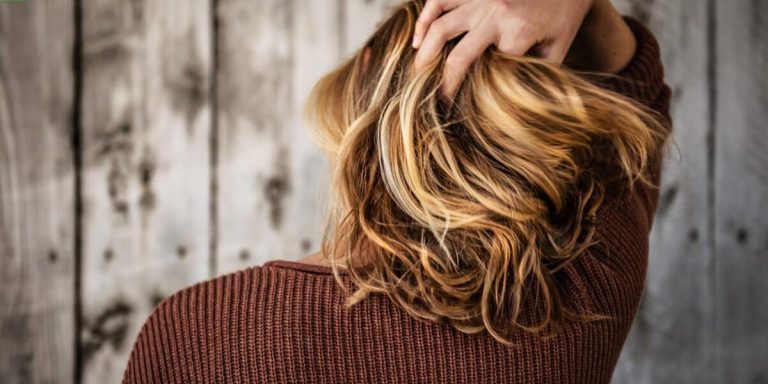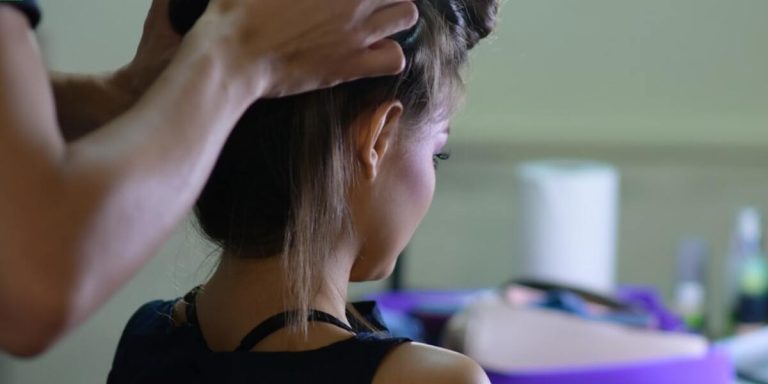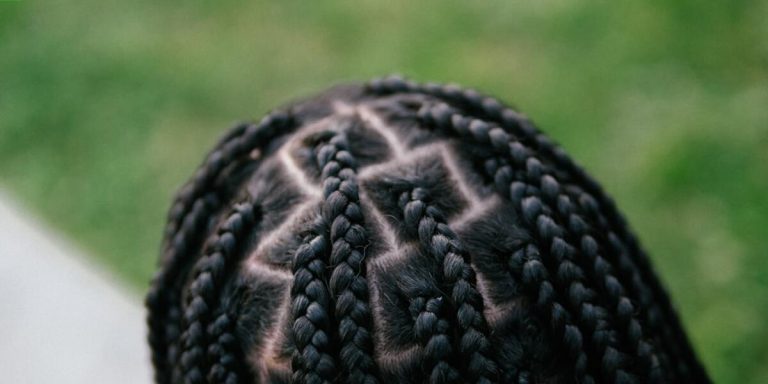Hair Loss Seborrheic Dermatitis Treatment: Exploring Effective Solutions for Scalp Health
Hair loss can be a challenging problem to deal with, but when it’s coupled with seborrheic dermatitis, the situation gets even more complicated. Choosing an effective hair loss seborrheic dermatitis treatment becomes critical for both restoring your scalp health and maintaining confidence in one’s appearance. This skin condition does not only lead to discomforting symptoms such as itchiness and scaling; it often contributes significantly towards accelerated hair thinning or fallout.
In this blog post, we dive deep into understanding what causes these dual issues together along with reliable solutions for managing them effectively. Our focus will remain on shedding light upon scientific advancements in treatments that are showing promising results against this unique blend of conditions affecting scalp health and subsequent hair growth – thus providing hope to those grappling with these unsettling problems.
Did you know?
Despite being largely overlooked, a 2018 study in the Journal of Dermatology found that nearly half (42%) of patients with seborrheic dermatitis experienced some degree of hair loss. This suggests an underlying connection between scalp health and fuller hair preservation.
Understanding Hair Loss from Seborrheic Dermatitis
Seborrheic dermatitis, a common skin condition, primarily affects the scalp and is frequently overlooked as a contributing factor to hair loss. It causes symptoms including:
- Redness
- Flakiness similar to dandruff
- An itchy scalp
If untreated, these symptoms can lead to increased hair shedding over time.
While seborrheic dermatitis doesn’t directly cause permanent follicle damage, it creates conditions that make your hair shed more than usual.
The treatment of any form of hair-related concern begins with correctly understanding the root of the problem – Seborrheic Dermatitis induced Hair Loss follows suit too. The negative effect on our tresses happens when excessive scratching due to persistent itchiness damages roots leading them into discontinuing their regrowth cycle prematurely which forms visible patterns thinning or bald spots.
Identifying Symptoms: Recognizing the Connection between Scalp Health and Hair Loss
Dermatologists often confirm that seborrheic dermatitis, a common scalp condition, can contribute to hair loss if left untreated. Let’s delve deeper into understanding the correlation between this skin disorder and its symptoms leading to hair thinning or loss.
One of the first steps towards addressing your concern with ‘hair loss due to seborrheic dermatitis’ is recognizing early signs related directly to your scalp health. In most cases, these indications start subtly but escalate rather quickly over time.
The Science Explained: How Seborrheic Dermatitis Leads to Thinning Strands
Seborrheic Dermatitis, often regarded as one of the notable villains in hair loss battles, wreaks havoc on your scalp health. How? The science is illuminating.
To start off, we need to understand Seborrheic Dermatitis itself; it’s a skin condition that primarily affects areas rich in oil-producing sebaceous glands: namely, our scalp. It manifests through redness, itching and flaking or dandruff – all factors detrimental to healthy hair growth.
The central player here is Malassezia yeast species. These yeasts are ordinarily present in our skin microbiome but can overgrow under certain conditions like stress or hormonal imbalances causing inflammation and excessive shedding of epidermal layers leading to flakes i.e., symptoms indicative of Seborrheic Dermatitis.
Why does this matter for your tresses? Inflammation spurred by these pesky microorganisms disrupts the natural balance on your scalp contributing significantly towards poor scalp health which indirectly accelerates hair thinning.
Furthermore, persistent scratching amplifies physical damage caused due to itchiness further worsening conditions for viable follicular growth cycle operations triggering inevitable hair fall episodes unlike any other standard fluctuations considered normal during regular cycles throughout an individual’s lifetime.
Medical Treatments for Hair Loss Due to Seborrheic Dermatitis
Advancements in medical treatments for hair loss due to seborrheic dermatitis have seen a significant rise, especially with the growth of science and technology in recent years. Seborrheic dermatitis is characterized by red and itchy scalp, which when left untreated can lead to severe hair loss. To combat this complication effectively, various effective treatment options have been developed making use of top-quality research.
Topical medications are now preferred as they directly target the affected area on the scalp caused by seborherric dermatitis. These include antifungal creams or shampoos containing active ingredients such as Ketoconazole or Ciclopirox that help reduce inflammation while controlling yeast overgrowth—a key factor contributing to this condition’s flaky patches causing distressing hair fall issues.
Oral medicines like isotretinoin may also be considered if topical applications show lesser improvement than desired over time. However, oral therapies usually follow more intense side effects hence only prescribed under specific circumstances where benefits outweigh risks involved.
Last but not least—lifestyle interventions play an equally crucial role alongside these advanced medical approaches for optimal management of seborrhoea-induced hair loss conditions. This includes maintaining good hygiene habits inspired from expert advice involving regular yet gentle shampoo routines whilst keeping away harsh chemicals potentially irritating your sensitive follicles further down their restoration journey during 2023 onwards.
Topical Medications and Shampoos: A First-Line Defense Against Flakes and Fallout
For those suffering from hair loss due to seborrheic dermatitis, the first line of defense often includes topical medications and specialty shampoos. These treatments target flaky scalp conditions, seeking not only to reduce visible symptoms but also help in controlling hair fall linked with this skin disorder.
Prescription or over-the-counter antifungal creams may be recommended by your healthcare professional as part of your initial treatment plan. Ketoconazole, an active ingredient commonly found in these products, has proven effective against the yeast-like fungus responsible for flare-ups associated with seborrheic dermatitis. Regular application can minimize inflammation and scale formation that might otherwise contribute to additional hair shedding.
Shampoos formulated specifically to fight off dandruff are another practical solution when dealing with seborrheic dermatitis-related hair loss issues. Ingredients such as selenium sulfide and zinc pyrithione have known anti-fungal properties which assist in maintaining a healthier scalp environment conducive for better growth patterns.
Over time, consistent use of medically-approved topicals combined with specialized shampoos can yield noticeable improvements not just on the surface level but at root depths where it matters most for overall follicle health.
Phototherapy Options: Harnessing Light for a Healthier Scalp
Phototherapy, a non-invasive hair loss seborrheic dermatitis treatment technique, has grown in popularity over recent years. This modern therapeutic approach harnesses the power of light to combat various skin conditions, including seborrheic dermatitis – one that often results in unsightly hair loss.
Light therapy comes detailed with an array of options for patients seeking relief from scalp troubles. Most notable among these is Ultraviolet B (UVB) phototherapy. UVB uses controlled doses of ultraviolet radiation to calm inflammation and reduce scales on your scalp caused by seborrheic dermatitis – attributes leading directly to improved follicular function and consequentially healthier strands sprouting anew.
Another illuminating option you may explore is Narrowband UVB (NBUVB) therapy. NBUVB exposes areas affected by dermatis directly to focused UV rays – eliminating ancillary exposure risks posed when bathing entire body scenarios common under traditional broad-band treatments.
If conservative methods don’t deliver desired outcomes, Psoralen Plus Ultra Violet A (PUVA) rides into picture as potential savior waving high-end solution flags! PUVA introduces psoralens into system stoking cutaneous cells toward increased photosensitivity before subjecting them under UVA radiation baths creating optimal circumstances promoting cell turnover acceleration reducing visible manifestations associated with this troublesome condition.
Natural Remedies and Lifestyle Changes for Managing Seborrheic Dermatitis Induced Hair Loss
Manage hair loss induced by seborrheic dermatitis with natural remedies and strategic lifestyle modifications. Seborrheic dermatitis, a chronic skin disorder affecting the scalp, often causes scaling, itching, redness, and potential hair loss. Consult your healthcare provider for professional treatment options tailored to your individual case. Additionally, integrate these organic solutions into your routine to possibly boost treatment effectiveness and improve overall scalp health.
Firstly, adopting a balanced diet rich in vitamins A,B,C,E along with Omega-3 fatty acids already stands out as an essential strategy against inflammation that triggers episodes of seborrhoea. Dietary changes play such an important role since deficiencies are often linked to worsened symptoms or flares ups of various skin conditions including Seborrheic Dermatitis.
In addition to dietary considerations: Regular exercise plays its part promoting circulation fostering healthier follicles that stimulate regrowth from any possible damage caused due to severe itchiness associated with SD related dandruff patches on the scalp.
Moreover embracing natural treatments like tea tree oil application has proven helpful for many battling this condition mainly due to its antifungal properties targeting Malassezia fungus seen involved with causing flare-ups. Furthermore using gentle shampoos made specifically addressing this type of dermal issue which maintains pH balance preventing further irritation also helps immensely throughout management process.
Herbal Supplements and Diet Adjustments For Improved Scalp Health
Addressing hair loss due to seborrheic dermatitis involves a comprehensive approach that includes natural remedies and lifestyle changes. A significant part of this strategy revolves around the use of herbal supplements and making necessary diet adjustments, considering they directly impact scalp health.
Beneficial herbs available for dietary supplementation are plentiful. Some noteworthy options include:
1. *Saw Palmetto*: Known for its DHT blocking properties – an hormone linked with male pattern baldness, supplementing your diet with Saw Palmetto can significantly reduce inflammation causing seborrheic dermatitis.
2. *Nettle Leaf Extract*: Rich in silica and sulfur, it’s a dual-action herb promoting healthier hairs while reducing inflammatory response on skin surfaces.
3. *Green Tea Extracts:* Packed with antioxidants like EGCG, green tea extracts promote hair growth by targeting the root cause: inflammation induced by seborhheic dermatitis.
To tackle hair loss and treat seborrheic dermatitis, consider adding these potent natural supplements and making certain dietary tweaks to enhance scalp health with essential nutrients.
– **Omega 3 Fatty Acids**: Foods high in Omega 3 fatty acids such as flaxseeds or fish oil help calm chronic inflammations including those seen in cases of Seborrhoeic Dermatitis.
Stress Management Techniques To Reduce Flare-Ups And Encourage Regrowth
Seborrheic dermatitis, an inflammatory skin condition often marked by itchy and flaky scalp patches, is known to contribute significantly to hair loss. However, beyond medical interventions like anti-dandruff shampoos or prescribed ointments, stress management techniques have proven effective in reducing flare-ups of seborrheic dermatitis induced hair loss while encouraging regrowth.
A key aspect to focus on when managing Seborrheic Dermatitis is preventing the triggers that lead to flare-ups. Stress has been identified as a major trigger for this condition. Reducing day-to-day tension can limit outbreaks and further damage caused by scratching – directly promoting healthier hair growth conditions.
1) Mindfulness Meditation: This type of meditation encourages individuals not just passively observe their mind but also become actively aware of stressful thoughts without interacting with them. Regular practice helps reduce cortisol levels (the hormone responsible for stress), thereby decreasing potential inflammation from seborrheic dermatitis which aids in maintaining healthy follicles.
2) Progressive Muscle Relaxation (PMR): PMR involves tensing each muscle group separately before releasing the tension; this relaxation technique promotes physical relaxation which could lower anxiety – a possible contributor towards increasing cases of scalp irritation related disorders including but not limited to seborrhoea linked alopecia.
Conclusion
In conclusion, managing hair loss due to seborrheic dermatitis need not feel like a losing battle anymore. The options for effective hair loss seborrheic dermatitis treatment are plentiful and scientifically proven to bring about significant improvement. From home remedies with natural ingredients to prescription treatments such as antifungal shampoos or topical corticosteroids – the road towards healthier scalp and improved hair growth is clearly marked.
As you embark on this journey of restoring your crowning glory, remember that consistent care and early action can make all the difference in successful outcomes. Be sure to browse around our website for more insightful information regarding other “Hair Loss Treatments”. We have gathered invaluable resources that could help navigate your path towards better scalp health – because nothing beats feeling confident with a full head of lustrous locks!







